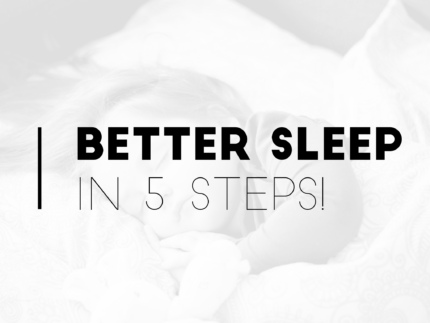Imagine if your doctor wrote ‘improve sleep’ on their prescription pad for you?
Some of you may have laughed at that thought and others may have loved the idea of being allowed to sleep a few more hours. I have to tell you though; sleep is one of the most underrated aspects of our health and is something I discuss with my patients almost daily. As a society, sleep is something we sacrifice for the sake of ‘busyness’ in our lives. Or worse, we will lose sleep to catch up on stimulating TV and social media and call it ‘downtime’.
Sleep should not be sacrificed!
When we sleep, the magic happens. I’m talking tissue and mental repair, metabolic reset (think insulin, leptin, cortisol), and inflammation reduction, to name a few. Does that sound like a recipe to help with weight loss resistance? I think so! I even dedicated a whole chapter to it in my upcoming book. Find out more HERE.
So whether you’re having difficulty falling asleep or staying asleep, the steps I’m going to share with you will help you prepare for those much-needed z’s.
1. Don’t watch TV, look at your phone or tablet in bed.
I put this first because everyone rolls their eyes at me when I say this. The blue light emitted from our devices interferes with our melatonin production and therefore our sleep-wake cycle (circadian rhythm). Adding blue light blockers to your devices is the first step, but leaving them outside of the bedroom is the ultimate goal. I know it can be an adjustment, but you will notice a significant improvement in your sleep because of it.
2. Exercise regularly, but not within 5-6 hours of your bedtime.
Regular exercise is a staple in a healthy lifestyle, but if you’re having issues with sleep I recommend doing it anytime except 5-6 hours before bed. That may be difficult for some to incorporate into their schedules; however, the release of adrenaline we experience with exercise promotes our sympathetic or ‘fight or flight’ state. Those hours before bed should be spent changing over to our parasympathetic or ‘rest and digest’ state.
3. Keep your room cool, dark and quiet.
After transitioning to this, I find it difficult to sleep in any other environment. To adjust the temperature of your heat you can either lower the thermostat or close the vent in your room. Some people find blackout blinds helpful to ensure darkness and others just close their regular blinds.
4. Set a consistent routine to trigger your body that it’s time to sleep.
That might mean reading a book, stretching, meditating, writing in a journal, talking to your partner about your day, using your diffuser, or planning for the next day. If you don’t have any form of routine at the moment, the options are endless. Pick something you actually enjoy doing and that will help you transition to a relaxed state.
5. Maintain a regular sleep schedule
(i.e. go to sleep and wake up at the same time each day +/- 30 minutes)
Setting a regular sleep schedule is in my opinion the ultimate sleep hack. I like to work backwards with my sleep schedule. If you know you have to be up at 6am, then count backwards the number of hours you function best off of. For some it may be 7 hours, other 9 hours. Do what works best for you!
It’s time to take our sleep seriously and commit to it for the long-term. I think it’s so important that you can find a whole chapter on sleep in my upcoming book – Finally Lose It. Like most things in health, consistency is key and setting up a routine may be the easiest way to start. I tend to take a tech-approach to transitioning into sleep by adding blue light blockers to all my devices and having hue lights in my home. Hue lights change blue light to red or green light at night to stimulate my parasympathetic nervous system (rest and digest). Sometimes if I’ve had an especially long day I like to take an Epsom salt bath with essential oils as well. Everyone is different so I suggest starting with my 5 steps and adjusting according to what suits you and your unique lifestyle. Happy sleeping!

